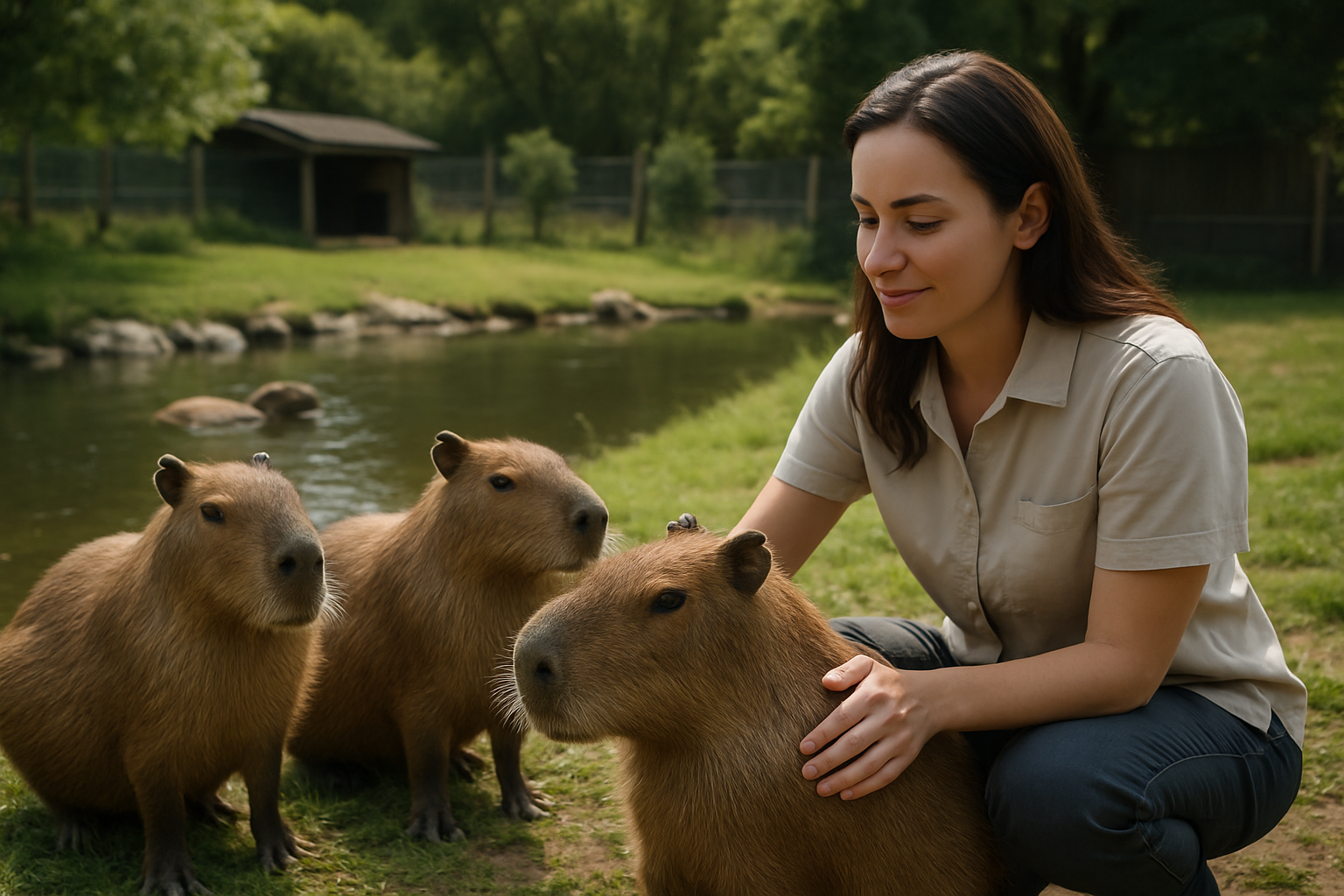Capybara Companionship: The Rise of Exotic Rodents as Pets
Imagine coming home to a cuddly, oversized guinea pig that loves to swim and lounge in the sun. This isn't a fantasy - it's the reality for an increasing number of pet owners who have embraced capybaras as their animal companions. These gentle giants of the rodent world are capturing hearts and challenging traditional notions of what makes an ideal pet. But what does it really take to care for these unique creatures, and why are they becoming so popular?

The Legality and Ethics of Capybara Ownership
Before considering a capybara as a pet, it’s crucial to understand the legal landscape. In many countries and states, owning a capybara is illegal without proper permits or licenses. Even where legal, ethical considerations come into play. These animals have complex social and environmental needs that can be challenging to meet in a domestic setting. Potential owners must carefully weigh the responsibilities and implications of keeping such an exotic pet.
Creating a Capybara-Friendly Home Environment
Capybaras require substantial space and specific environmental conditions to thrive. A large outdoor enclosure with both land and water features is essential. The enclosure should include a pool or pond deep enough for swimming, as well as grassy areas for grazing. Indoor accommodations must be spacious and temperature-controlled, as capybaras are sensitive to extreme heat and cold.
Dietary Needs and Health Considerations
In the wild, capybaras are primarily herbivores, feeding on grasses, aquatic plants, and fruits. Replicating this diet in captivity is crucial for their health. A typical diet consists of high-quality grass hay, fresh vegetables, and specially formulated pellets. Regular veterinary care is essential, but finding a vet experienced with capybaras can be challenging and costly.
Social Needs and Behavioral Traits
Capybaras are highly social animals, typically living in herds in the wild. In a domestic setting, they often form strong bonds with their human caregivers and other pets. However, they may become stressed if kept alone, leading some experts to recommend keeping them in pairs or small groups. Their social nature makes them affectionate pets, but it also means they require significant time and attention from their owners.
The Financial Impact of Capybara Care
Owning a capybara is a significant financial commitment. Initial costs can range from $1,000 to $3,000 for the animal itself, with additional expenses for enclosure construction, veterinary care, and ongoing maintenance. Monthly costs for food, supplements, and habitat upkeep can easily exceed several hundred dollars. Potential owners should be prepared for a long-term investment, as capybaras can live up to 12 years in captivity.
Capybaras in Popular Culture and Social Media
The rise of capybaras as pets has been fueled in part by their increasing visibility on social media platforms. Videos and images of these charismatic creatures lounging in pools, interacting with other animals, and bonding with their human caregivers have gone viral, sparking interest among animal enthusiasts worldwide. This newfound popularity has led to both positive and negative outcomes, raising awareness about these unique animals while also potentially encouraging impulsive pet ownership decisions.
Conservation Implications and Ethical Considerations
As interest in capybaras as pets grows, conservationists warn of potential impacts on wild populations. While most pet capybaras are bred in captivity, increased demand could lead to illegal wildlife trafficking. Additionally, the popularization of exotic pets often leads to abandonment or improper care when owners realize the extent of the commitment required. Responsible ownership and education are crucial to ensuring the welfare of both captive and wild capybaras.
The Future of Capybara Companionship
As more people become aware of capybaras as potential pets, the conversation around their care and welfare continues to evolve. Advocates argue that, with proper care and dedication, capybaras can form deep bonds with their human families and thrive in domestic settings. Critics, however, maintain that these wild animals are best left in their natural habitats or in professional care facilities.
The trend of capybara companionship raises important questions about the nature of pet ownership and our relationships with exotic animals. As we continue to explore these unique bonds, it’s crucial to prioritize the well-being of these gentle giants and consider the broader implications of bringing wildlife into our homes. Whether viewed as beloved pets or wild animals best appreciated from afar, capybaras have undoubtedly captured our collective imagination and sparked a fascinating dialogue about the future of exotic pet ownership.





